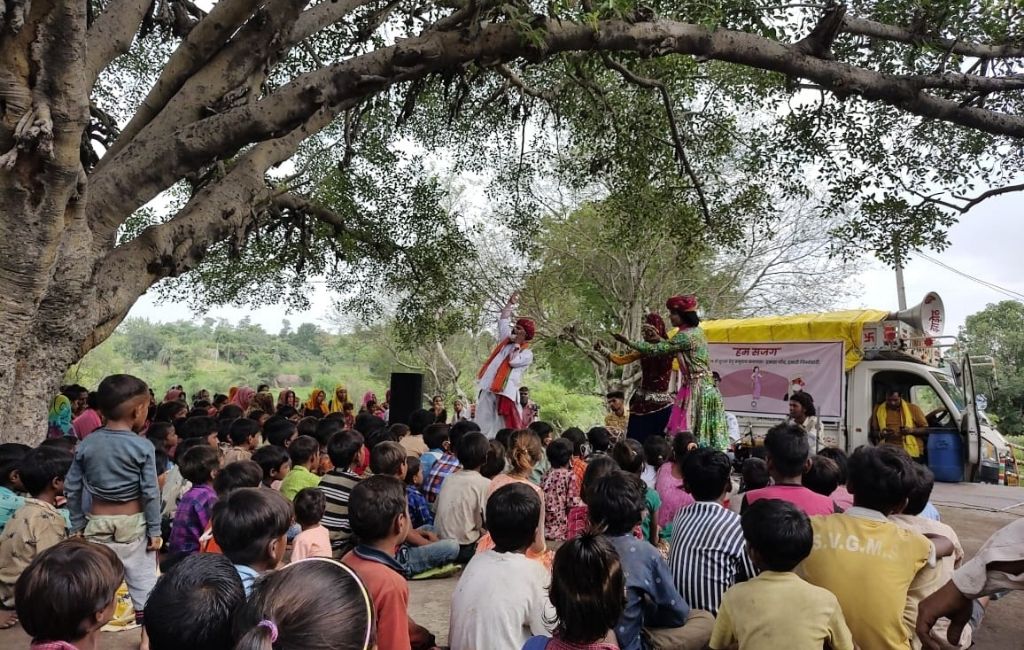
Rural theatre acts out vaccine hesitancy
Setting the stage to bust myths around vaccine hesitancy, tribal dance and theatre productions manage to convert the unvaccinated in Rajasthan, proving the power of tailor-made messaging.

Setting the stage to bust myths around vaccine hesitancy, tribal dance and theatre productions manage to convert the unvaccinated in Rajasthan, proving the power of tailor-made messaging.
It is a bright September afternoon in Mandwa, a village located in the hilly terrains of Kotra. A troupe of folk theatre artists from the neighbouring village arrives in colourful dresses.
A vehicle with loudspeakers mounted on top is moving around the village playing popular folk songs with an announcer in the driver’s seat – sharing information about an “amazing program” happening in their village that they must absolutely not miss. After an hour of moving around various hamlets and main markets, the crowd starts gathering.
Groups of curious men, women and children scramble to find a spot on the ground in the local school. The audience also includes the more influential people of the village, including the sarpanch, the school principal, public health officials and other frontline development workers.
Before the show begins there is one final push for people to gather and listen.
“Khel Niralo Bhaaya, Khel Niralo – Aao aao ni Dekha khel (Brothers, the performance is going to be exciting – Please come and witness the performance!),” booms a voice from a speaker.
As the show begins, the lead artists begin their drama as the musicians sing from the background. In an animated voice, the main actor talks about the challenges in the past year – the two waves of the virus and the need to tackle the virus together.
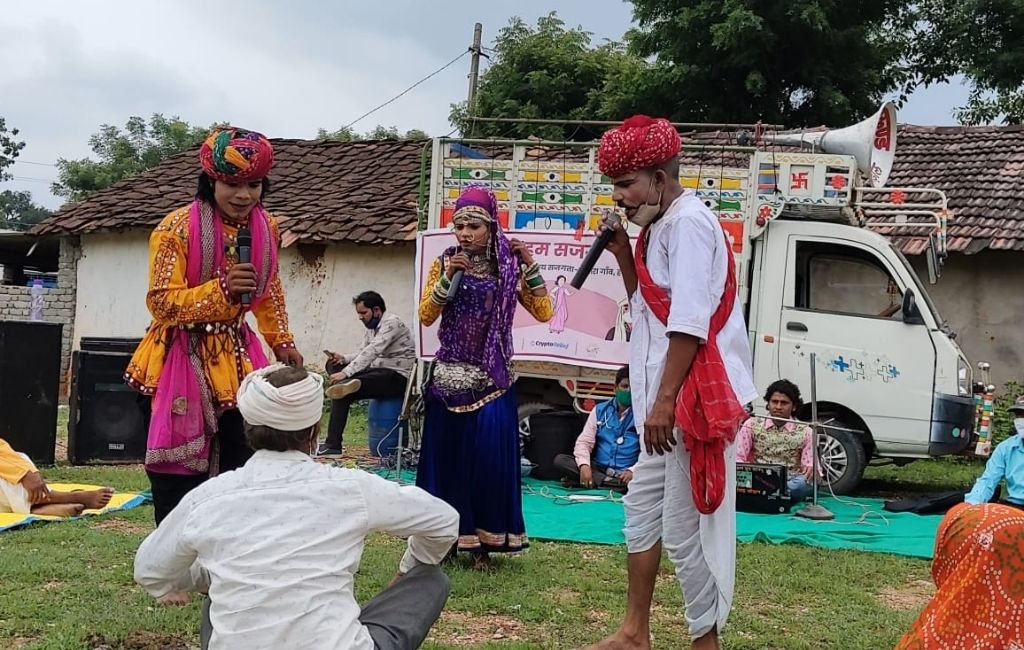
The solution – getting the COVID-19 vaccination – sounds familiar to the audience from posters, phone calls and government messages. But hearing about it in their traditional nukkad natak (street theatre) and gawari (tribal dance) has a totally different impact.
For frontline workers like me, it is also our final attempt to motivate hesitant locals to get their first jab.
As we struggled with vaccine hesitancy in remote villages of southern Rajasthan, many fears from the community kept coming up.
Banshi Lal, a school principal from Mandwa, said when they started the vaccination drive they sat in camps for three days, yet not a single person came.
“I tried speaking with families to understand the reasons, but instead they questioned my intentions. Some said it will make them infertile and many felt we were here to murder them through vaccination!” Lal said. (ALSO READ: Women volunteers allay vaccine fears in Jharkhand)
With an aim to improve the information mismatch and get the community vaccinated, the local development group I work with, Seva Mandir, designed a communication strategy using folk theatre to reach the reluctant.
In July 2021 we launched the Hum Sajag (Let’s be Vigil) campaign with a multipronged communication strategy that focused on three key aspects – building nigrani (watch) committees, training of the frontline workers on the technical tools and adopting local folk media, including gawari and nukkad natak, accordingly to combat vaccine hesitancy.
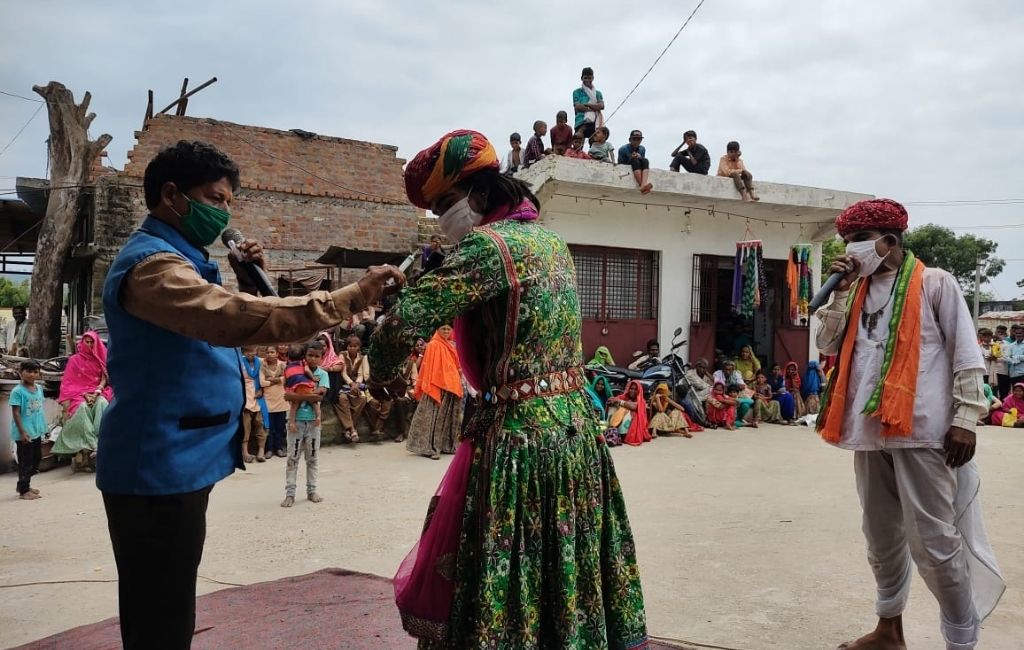
The nigrani committee, which consisted of community leaders, Seva Mandir staff and other frontline workers, formed the base of the campaign. They acted as the eyes and ears of the villages to understand the existing myths and challenges of the information asymmetry that needed to be addressed.
Based on their research, the script of the Nukkad Natak was designed using songs, dance and theatre. The artists came from the nearby village and performed their act in the local Mewadi and Wagdi languages.
The story showed the return of a migrant labourer and his social interactions with the disease. The household dynamics changed drastically upon his return to the village following the March 2020 lockdown that was announced suddenly.
Other characters like the Bhopa (quack/ traditional healer), the doctor and Covid Mata (Goddess of Covid-19) also drew on the existing social and religious systems of the village. Humor was the main element holding the act together.
Significant efforts were also taken to incorporate the spirit of the gawari dance – a vibrant ritualistic dance form popular among the Bhil tribes, where men dress up as female characters and travel across villages to express their devotion to Goddesses Parvati. The act also included audience participation, with people in the crowd able to pose questions in the middle of the act.
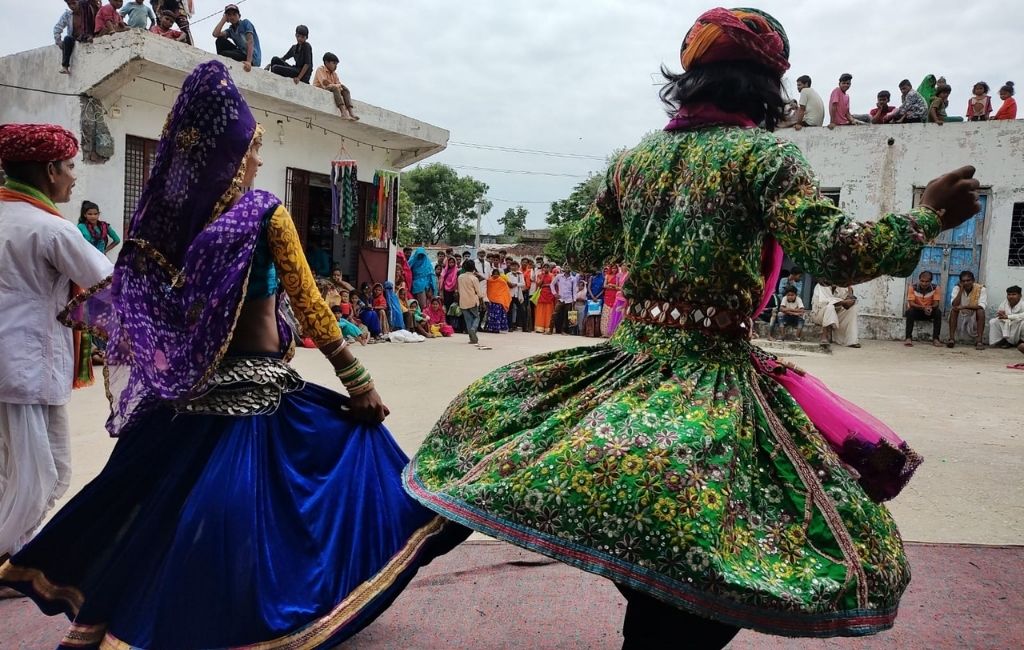
“If I feed my child after getting vaccinated, will the virus come through milk going to the child,” asked someone from the audience during one performance. This proved a great opportunity to set the record straight.
But some people at the beginning of the campaign remained unconvinced.
“I felt disheartened when a man walked out of the performance along with his daughter-in-law and other women, while we spoke about vaccination,” Shiv Singh, one of the performers, said. “People were really scared that we may forcefully vaccinate them after the show. We need to work more on this misperception.”
(ALSO READ: Participatory theatre helps frontline workers cope with burn-out)
As we took the theatrical production around different locations for a month, the frontline teams helped us hone our message – allowing us to emphasise certain aspects for different locations.
“All the village heads have got vaccinated, but they are not allowing women in the house to get vaccinated. I am repeatedly meeting them before camps,” Rekha Devi, an anganwadi worker from Jhadol told Village Square.
Building empathy and breaking top-to-down communication was crucial.
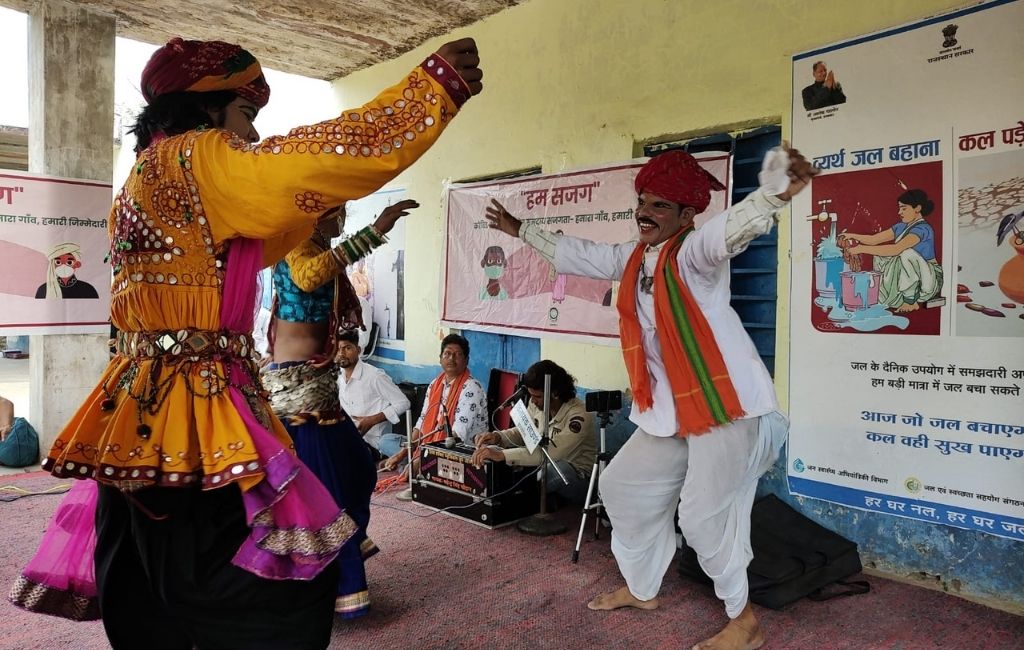
“Although I was asked to emphasize the importance of taking vaccines, I, myself, was scared of getting one. I can understand why women in my field area are so afraid,” admitted one health care worker.
Sometimes the effect of this dramatic messaging is instant.
In Sarada, where turn-out at a nearby vaccination camp was very low, there was an immediate response to a performance.
“After watching the performance in complete silence, many of the audience members got up and got vaccinated. It was profound,” Suresh Meena, team member said.
As the vaccination numbers increased substantially over the following months, it has been interesting to see the sustainability and effectiveness of age-old communication practices, like tribal theatre.
Inter-personal messaging deeply rooted in a cultural context is a powerful tool in helping build meaningful spaces in which to have difficult conversations.
Anu Mishra is communication and training coordinator at Seva Mandir. Anubhav Joshi is a master’s student studying Climate Change and Development at the University of Reading, UK.